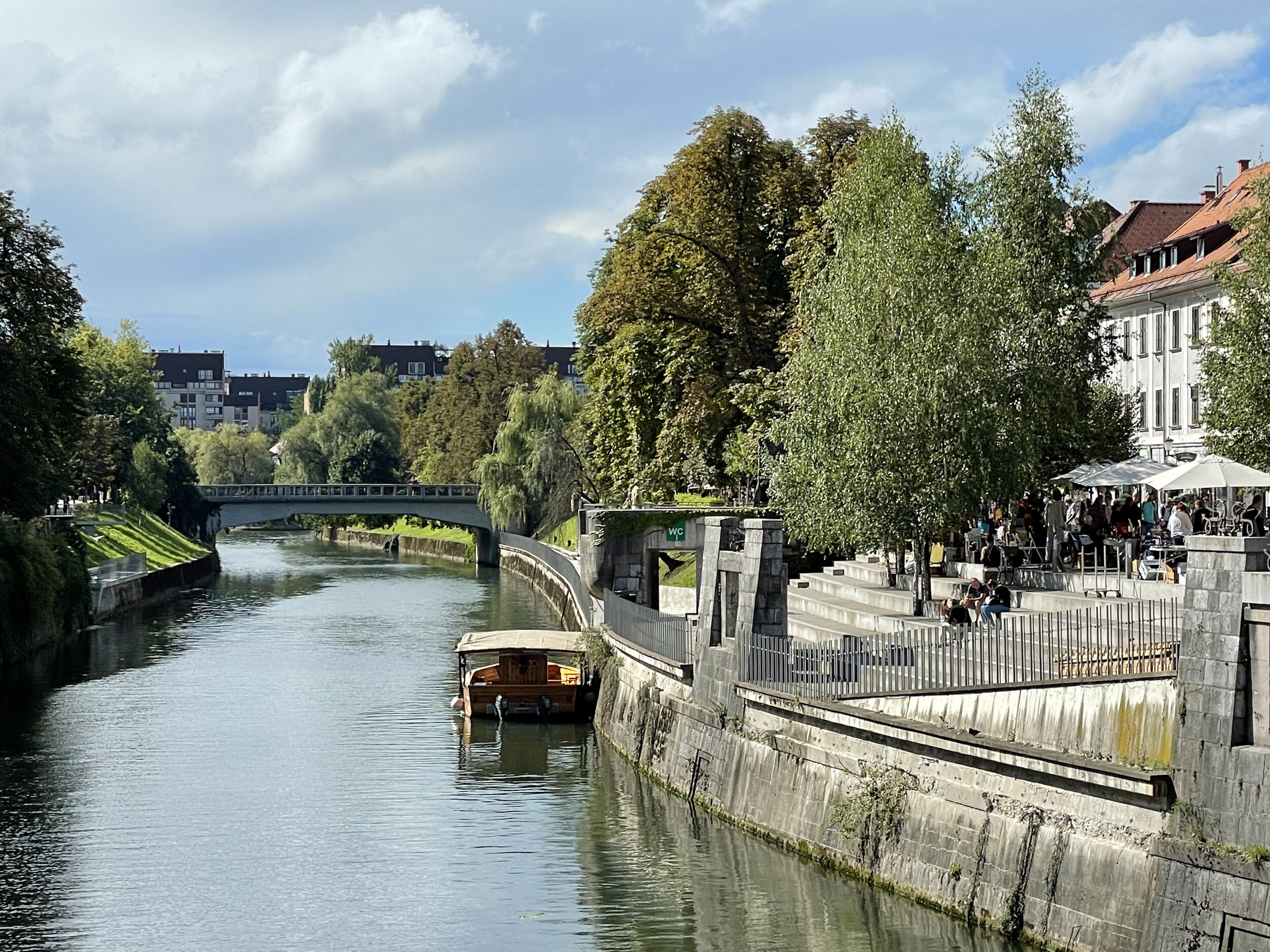Trieste, Istria and Slovenia, August 28 2021
In the extreme northeast corner of the Italy lies the city of Trieste, south of there you find the triangular peninsula of Istria in Croatia, and directly to the east, the small nation of Slovenia. The landscape is mostly hilly and the area is sandwiched between the Alps and the Adriatic. We wanted to go by train and keep things efficient and simple. Unfortunately, the wonderful European rail system seems to dissolve as you approach the Balkans, so we decided instead to take the train only as far as Trieste and then rent a car from there. As we discovered, the infrastructure problem isn’t limited to the trains, with the roads being very crooked, sometimes narrow, and often under repair. Driving it turns out, was often annoying and sometimes frustrating, but thankfully the views made up for it.
The first night was in Ljubljana. Like a good number of old European cities, small and large, it involves a high bluff with a castle overlooking an old city center abreast a river. The Ljubljanica river is the heart of the city. Beautiful bridges join the riverwalks and their multitude of busy cafes. It is at once serene and bustling with people who, although they may be tourists, all appear as if they belong there. Further away from the river it becomes more ordinary, and the graffiti begins to catch on, but having a coffee at a cafe along the river bank is a special experience. After several, and some nice pastries, we had lunch at a well attended restaurant a few blocks into town and then drove away toward our next destination. At least for me, Slovenian food (excepting the coffee and pastries) is nothing to seek out, I found it plain and heavy, like a mediocre fusion of German and Swedish.
Cafes along the Ljubljanica River
Another Ljubljana bridge
The next stop was Pola, or Pula depending on the perspective, as the local signage include both. Really? I thought to myself just pick one name and go with it, people will adjust. I wanted to see Pola (I’ll use the Italian name) because it has some historical significance, being first an important Roman city and then more recently a major military base for the Austria Hungarian Empire. There are two principal Roman sites, the impressive Amphitheater and a short walk away the temple of Augustus. You can see the best of Pola easily in one day, including climbing up to the Venetian fort that is perched high in the center of the old town. There you get a commanding view of a perfect natural port, easily understanding why it was chosen and how it could be well protected.
The Roman Amphitheater in Pola
Temple of Augustus
In fact in World War One, Pola was the most fortified naval base in Europe, impenetrable and dominating the Adriatic. At the start of the war, a then modern French submarine, the Curie attempted to find a path in, torpedo a few Austrian dreadnoughts and sneak away. Sort of a Pearl Harbor attack from below. Unfortunately for the French they ran into the protective submarine netting and then forced to surface were quickly dispatched by an Austrian destroyer. In one of the most notorious cases of having someone take your weapon away and use it against you, the Austrian navy raised the sunken sub and without delay repaired it. Now christened the U-14, it became one of the most successful raiders of the war, sinking forty-five thousand tons of Allied merchant shipping in the Mediterranean. The vessel and her captain both survived the war intact, with the sub being handed back to the French after the armistice (Oh, here’s your gun back!), and the decorated captain deciding to retire to Salzburg and devote time to his family. His name, was Georg Ritter von Trapp. Yes that Von Trapp and we all know how their story played out.
View from the Venetian fort toward the harbor
Fort view of the Amphitheater
Trieste was the final stop and we turned the car in on arrival to spend two nights there. Trieste is not your typical dirty old port town. The waterfront is full of restaurants, bars, high end shops and piazzas surrounded with beautiful architecture. The grand piazza in the center is sometimes used for concerts. To give you idea of it’s size, Green Day and Iron Maiden have each played there to over twelve thousand fans. We stayed at the Doubletree in the city center, it is simply beautiful, the type of hotel people came in just to admire.
Trieste water’s edge
Cafes abound in Trieste
Along a piazza
The waterfront faces west to the Adriatic and as the sun sets there is a dramatic change to the cityscape. The buildings are bathed in an incredible orange light, the sky above exploding with color. At least that evening, it was almost too brilliant to be real.
The sunset, no really.
On a historical note, after the Second World War, Trieste and a small area south of it was made a free city. Occupied by the Allies it remained so until 1954 when the city was given back to Italy and the area south to Yugoslavia. Apparently some Triestini haven’t forgotten those times and we saw funny billboard to that effect. Since Trieste doesn’t have any major tourist sites it is somewhat overlooked in the travel guides, but if I was traveling back through, rounding the North Adriatic coast on my way east, I wouldn’t miss it.
Please come back, well the tourists anyway
Staircase at the Doubletree
The bar at the Doubletree

















